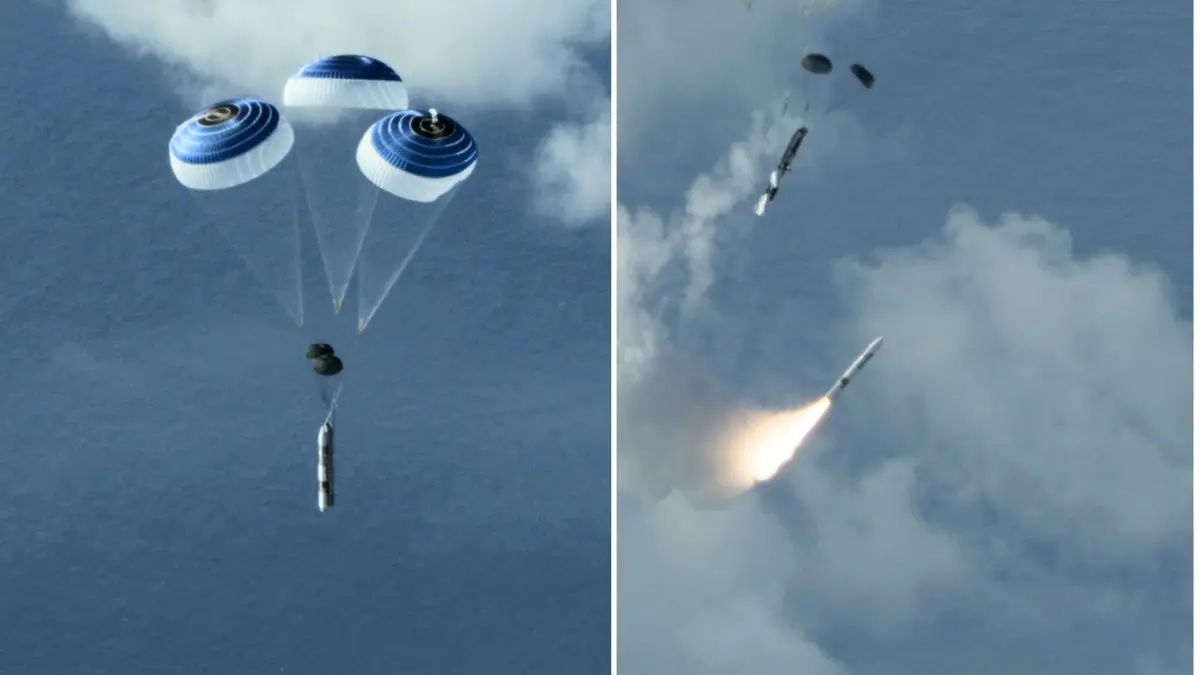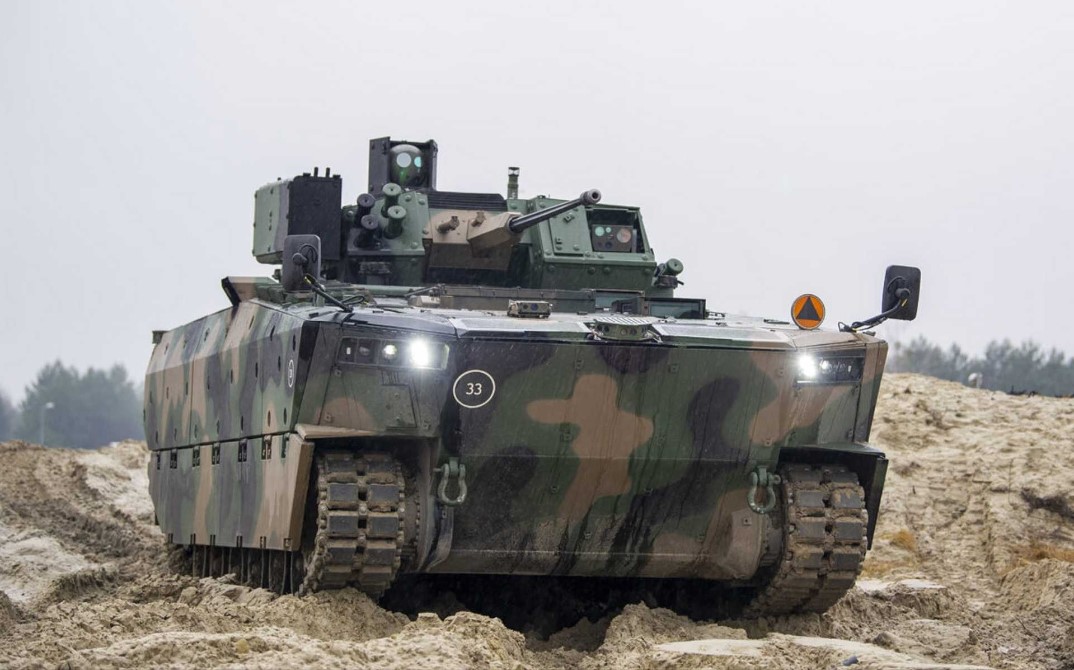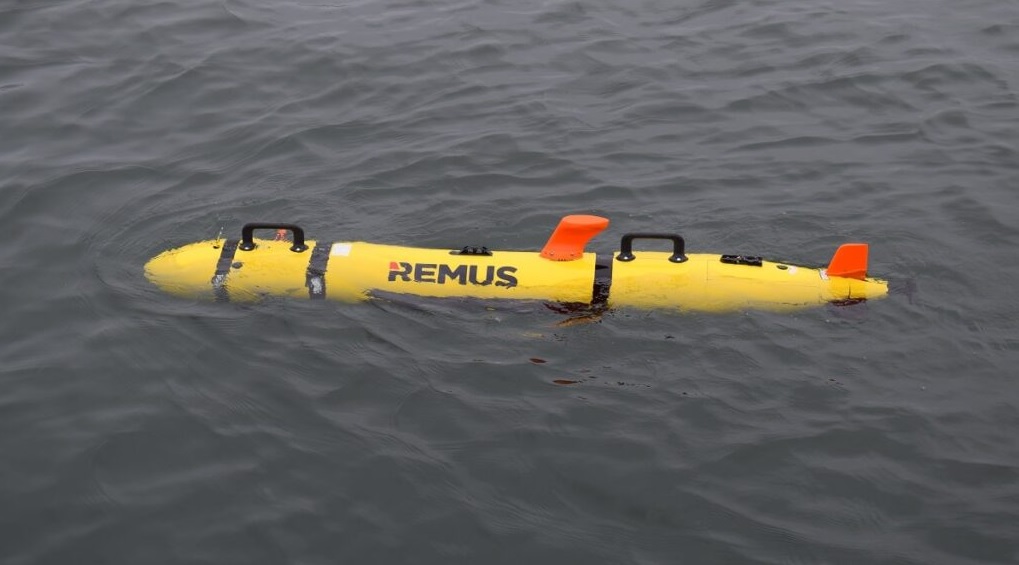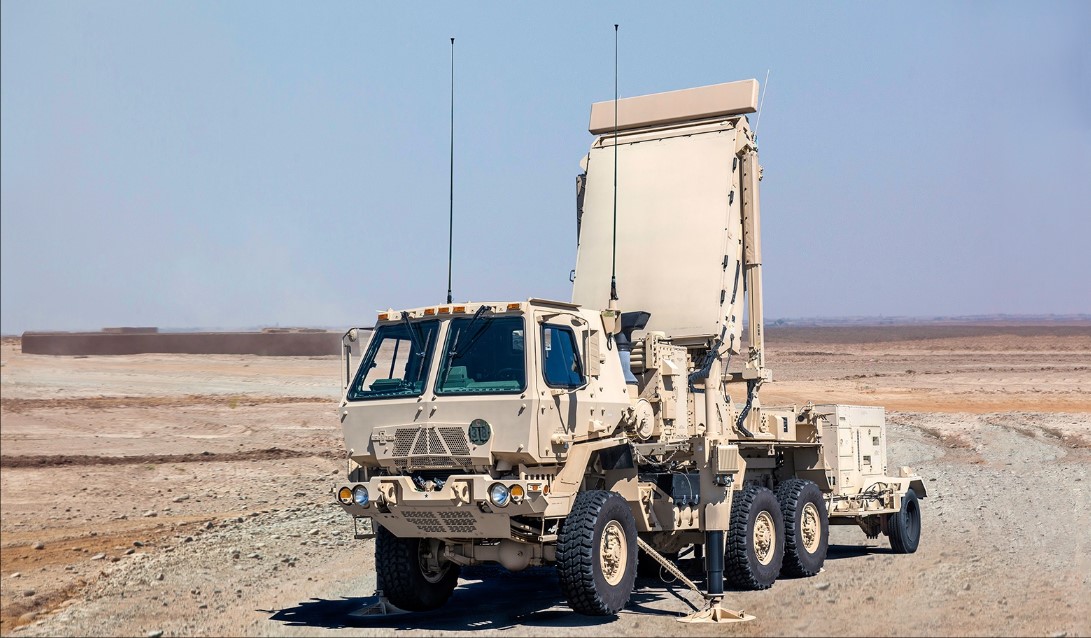World
Airbus has introduced the LOw-cost Air Defence (LOAD) system, a counter-unmanned aerial vehicle (UAV) designed to address the growing challenge of drone swarms in modern warfare. Based on the Do-DT25 aerial target drone, LOAD is equipped with up to three guided missiles and offers a reusable, autonomous solution for detecting and neutralizing loitering munitions under human supervision. Design and Capabilities The Do-DT25, serving as the foundation for LOAD, measures 3.1 meters in length with a wingspan of 2.5 meters. It achieves speeds up to 300 knots (555 kilometers per hour) and operates within a range of approximately 100 kilometers. Launched via catapult, LOAD returns to base using a parachute system, ensuring reusability and cost-effectiveness. While specific details about the missile types remain undisclosed, the system's design emphasizes affordability and efficiency in countering drone threats. Strategic Integration Traditional air defense systems like the Patriot and IRIS-T are effective but come with high operational costs, especially when countering large formations of inexpensive drones. Deploying a $450,000 IRIS-T missile to eliminate a $20,000 drone is economically unsustainable. LOAD addresses this imbalance by providing a low-cost alternative that can fill gaps in radar coverage and engage multiple targets without the financial strain associated with higher-end systems. Development Timeline Airbus plans to conduct the maiden flight of a LOAD prototype, armed with two missiles, by the end of 2025. The final product is expected to be operational by 2027, offering military forces a timely and effective tool against evolving aerial threats. Analysis The introduction of LOAD signifies a strategic shift towards adaptable and economical defense solutions in response to the proliferation of UAV technologies. By leveraging existing drone platforms, Airbus reduces development time and costs, delivering a system capable of autonomous operation with human oversight. This approach not only enhances operational flexibility but also aligns with efforts to reduce dependency on external defense components, as evidenced by the absence of U.S. parts in LOAD's construction. In summary, Airbus's LOAD system represents a significant advancement in counter-drone capabilities, offering a practical and cost-effective solution to the challenges posed by modern aerial threats.
Read More → Posted on 2025-03-27 15:11:29World
HII's Ingalls Shipbuilding division has achieved a significant milestone with the successful launch of the future USS Jeremiah Denton (DDG 129) on March 25, 2025. This event marks the third Flight III Arleigh Burke-class destroyer constructed at the Pascagoula, Mississippi shipyard. The launch process involved transferring DDG 129 from land to a dry dock using translation railcars. Once positioned, the vessel was floated and maneuvered by tugboats to a pier, where it will undergo final outfitting, systems activation, and rigorous testing before commissioning into the U.S. Navy fleet. DDG 129 honors the legacy of former U.S. Senator Jeremiah Denton Jr., a distinguished Vietnam War veteran awarded the Navy Cross for his valor as a prisoner of war. Following his military service, Denton represented Alabama in the U.S. Senate after his election in 1980. As a Flight III Arleigh Burke-class destroyer, the future USS Jeremiah Denton is equipped with the advanced AN/SPY-6(V)1 Air and Missile Defense Radar (AMDR) and the Aegis Baseline 10 Combat System. These enhancements significantly bolster the Navy's ability to detect, track, and engage contemporary threats, ensuring operational superiority well into the 21st century. Ingalls Shipbuilding currently has five Flight III destroyers under construction: Ted Stevens (DDG 128), Jeremiah Denton (DDG 129), George M. Neal (DDG 131), Sam Nunn (DDG 133), and Thad Cochran (DDG 135). This ongoing production underscores the shipyard's commitment to delivering state-of-the-art vessels that enhance the Navy's combat readiness and global presence. The successful launch of DDG 129 reflects the dedication and expertise of Ingalls Shipbuilding's workforce and highlights the collaborative efforts with Navy partners. As the future USS Jeremiah Denton progresses through its final phases, it stands poised to join the fleet as a formidable asset in safeguarding national interests and maintaining maritime security.
Read More → Posted on 2025-03-27 15:06:25World
The U.S. Army has awarded a $16.9 million contract to Leonardo DRS for the modernization of the Paladin Electric Servo Amplifier (PESA) system, a crucial component in the M109A7 Paladin self-propelled howitzer. This upgrade aims to enhance the weapon's electric control capabilities, ensuring better performance, reliability, and ease of maintenance. The M109A7 Paladin is a critical part of the U.S. Army's artillery forces, known for its firepower and battlefield adaptability. The PESA system plays a key role in enabling precise movement and positioning of the gun turret and firing mechanisms. By developing a next-generation prototype, Leonardo DRS plans to integrate modern electrical technologies that will improve manufacturability while maintaining the current operational capabilities. One of the main focuses of this upgrade is improving line replaceable units (LRUs)—modular components that can be swapped out easily for repairs or maintenance. This will ensure long-term sustainability and reduced downtime, which is crucial in combat scenarios where reliability is paramount. Leonardo DRS executives have emphasized the significance of this project, stating that it will future-proof the M109A7 Paladin and enhance its battlefield effectiveness. Denny Crumley, Senior Vice President and General Manager of the company’s Land Electronics business unit, stated that their cutting-edge technology will continue to provide superior support for U.S. Army warfighters. Strategic Impact and Analysis The upgrade of the PESA system comes at a time when the U.S. military is prioritizing modernization efforts across its artillery platforms. With evolving threats and advancements in electronic warfare, ensuring that platforms like the M109A7 remain technologically advanced and combat-ready is critical. Enhanced Survivability: Improved electrical systems reduce maintenance needs, increasing combat readiness. Faster Response Time: A more efficient servo amplifier means quicker targeting and firing cycles, a crucial advantage in modern warfare. Sustainability: The focus on replaceable components will lead to cost savings and improved logistics support over the platform's lifespan. As the U.S. Army continues to evolve its artillery forces, Leonardo DRS’s modernization of the PESA system will reinforce the Paladin’s role as a key battlefield asset for years to come.
Read More → Posted on 2025-03-27 14:54:24World
The U.S. Missile Defense Agency (MDA), in collaboration with the U.S. Navy, has successfully conducted Flight Test Other-40 (FTX-40), also known as Stellar Banshee, marking a crucial step in defending against hypersonic missile threats. The test, conducted on March 24, 2025, off the coast of Kauai, Hawaii, showcased the ability of the Aegis Combat System to track and simulate engagements with a maneuvering hypersonic target. Breaking Down the Test The USS Pinckney (DDG 91), an Arleigh Burke-class guided-missile destroyer, utilized the latest Sea-Based Terminal (SBT) Increment 3 capabilities integrated into the Aegis Combat System. The ship tracked and simulated a defensive engagement against a Medium Range Ballistic Missile (MRBM), which featured an advanced Hypersonic Target Vehicle (HTV-1) to simulate real-world threats. While this test did not involve an actual missile intercept, it was a vital step in understanding how hypersonic projectiles behave in flight and how current systems can adapt to counter them. The trial also provided critical tracking data to the Hypersonic and Ballistic Tracking Space Sensor (HBTSS) satellite, enhancing its role in monitoring and predicting hypersonic missile trajectories. This capability is crucial, as hypersonic weapons travel at speeds greater than Mach 5 and are highly maneuverable, making them difficult to track using traditional radar systems alone. Advancing U.S. Missile Defense According to MDA Director Lt. Gen. Heath Collins, the test is part of an ongoing effort to strengthen U.S. homeland and force protection against rapidly evolving missile threats. "The Aegis Weapon System is critical to our next-generation integrated air and missile defense architecture, and today’s test demonstrated key advancements in our counter-hypersonic capabilities," Collins stated. FTX-40 also demonstrated the integration of space-based sensors with shipborne tracking systems, allowing for faster detection and response times. The data gathered from this event will inform the development of next-generation interceptors and improve missile defense tactics. Next Steps: The Path to Intercept FTX-40 is a precursor to a more ambitious test: Flight Test Aegis Weapon System-43 (FTM-43). In this upcoming test, an upgraded Standard Missile-6 (SM-6) will attempt to intercept an HTV-1 hypersonic target in real time. If successful, FTM-43 will mark a major breakthrough in hypersonic missile defense, proving that existing naval defense systems can adapt and respond to the growing hypersonic threat. The success of FTX-40 follows last year’s FTM-32, where an Aegis-equipped destroyer successfully intercepted an MRBM during its terminal phase. Together, these tests highlight the growing effectiveness of layered missile defense—combining sea, space, and land-based tracking systems to create a robust shield against both ballistic and hypersonic threats. Strategic Implications With Russia, China, and North Korea aggressively developing hypersonic weapons, the U.S. military is racing to stay ahead of the curve. Hypersonic missiles are considered one of the biggest threats to modern defense systems, as they can evade traditional missile shields and strike with little warning. The ability of Aegis-equipped destroyers to track and engage these threats means that U.S. naval forces can serve as a mobile, flexible defense network rather than relying solely on fixed land-based systems. As the MDA and Navy move towards live intercept testing, the success of FTX-40 represents a pivotal moment in hypersonic missile defense. The ability to detect, track, and ultimately neutralize hypersonic threats will be crucial in maintaining strategic stability in an era where missile technology is advancing at an unprecedented pace.
Read More → Posted on 2025-03-27 14:52:06World
Poland has taken a significant step in modernizing its armed forces with the signing of a €1.53 billion contract for the delivery of 111 Borsuk infantry fighting vehicles (IFVs). The agreement, finalized on March 27, 2025, between Poland’s Armament Agency and a consortium led by Polska Grupa Zbrojeniowa S.A. and Huta Stalowa Wola S.A., marks the beginning of large-scale production for one of the most advanced combat vehicles in the country’s history. The first deliveries are expected between 2025 and 2029. A Strategic Leap for Poland’s Mechanized Forces The Borsuk IFV is a critical addition to Poland’s military as it seeks to replace its ageing Soviet-era BWP-1 fleet. Designed for versatility and high mobility, the vehicle features a remote-controlled ZSSW-30 turret system, armed with a Bushmaster Mk.44S automatic cannon and a 7.62 mm UKM-2000C machine gun. It also boasts a dual anti-tank guided missile launcher, making it capable of engaging both armoured threats and aerial targets in all weather conditions. With a combat weight of 28 tonnes, the Borsuk is designed for modern battlefield conditions, offering amphibious capabilities and speeds of up to 65 km/h on roads and 8 km/h in water. Its modular design allows integration with multiple combat and support variants, including reconnaissance, command, medical evacuation, and chemical reconnaissance vehicles. Long-Term Military Planning and Expansion The March 2025 contract follows a broader framework agreement signed in February 2023, outlining Poland’s intention to acquire approximately 1,400 Borsuk vehicles. This plan underscores Poland’s commitment to upgrading its land forces in response to regional security threats, particularly with ongoing tensions in Eastern Europe. The introduction of advanced platforms like the Borsuk enhances Poland’s deterrence capability, aligning its military forces with NATO standards. Additionally, the deal is expected to boost Poland’s domestic defense industry by strengthening manufacturing capabilities and supporting local employment. The participation of Polish defense firms ensures long-term technological advancements and self-reliance in armored vehicle production. Analysis: A Game-Changer for Poland’s Defense Strategy The Borsuk IFV program is not just about replacing old equipment—it represents a broader shift towards a more modern, networked, and NATO-compatible mechanized force. Poland’s military planners have prioritized mobility, firepower, and protection, making the Borsuk a well-rounded platform suited for both conventional warfare and asymmetric threats. Moreover, the modular nature of the Borsuk family provides flexibility for future upgrades, ensuring it remains relevant in evolving battlefield conditions. Its emphasis on amphibious capabilities also highlights Poland’s focus on adaptability, particularly in scenarios requiring rapid force deployment across diverse terrains. With Poland’s increasing defense spending and commitment to large-scale modernization programs, the Borsuk IFV deal serves as a key milestone. It signals Poland’s readiness to defend its borders and strengthens its role as a major player in European security.
Read More → Posted on 2025-03-27 14:47:05World
For years, Elon Musk's SpaceX has been at the forefront of U.S. military space launches, offering reliable and cost-effective solutions for missions beyond Earth's atmosphere. This dominance is now being challenged as the U.S. Space Force has officially certified United Launch Alliance's (ULA) Vulcan Centaur rocket to carry critical national security payloads. This certification marks the culmination of a rigorous, multi-year evaluation process, encompassing thorough assessments of hardware, software, and subsystem designs. It confirms that the Vulcan Centaur has met all 52 criteria required for National Security Space Launch (NSSL) certification. Brigadier General Kristin Panzenhagen, Program Executive Officer of the U.S. Space Force's Space Systems Command, emphasized that Vulcan's certification enhances the nation's launch capacity, resiliency, and flexibility for its most critical space-based systems. Currently, SpaceX and ULA are the only two companies certified to deliver military payloads to space. The Vulcan Centaur, designed to replace ULA's Atlas V and Delta IV rockets, promises high performance and extreme accuracy for even the most challenging orbits. The two-stage system features liquid rocket engines in the first stage, while the second stage utilizes the Centaur upper stage, a component with a proven track record on other rockets. Originally, ULA aimed to complete the NSSL certification process by the end of 2024. However, a setback occurred due to a failed launch in October, attributed to a manufacturing defect involving the Vulcan's Northrop Grumman-supplied solid rocket booster. With the NSSL certification now secured, Vulcan is expected to begin launching critical payloads, with 18 missions planned for this year. The landscape of military space launches is becoming increasingly competitive. Blue Origin's New Glenn rocket is also vying for NSSL certification, having successfully completed its first certification flight in January at Cape Canaveral Space Force Station, meeting its primary goal of reaching orbit. Additionally, Rocket Lab and Relativity Space are set to begin NSSL certification with their Neutron and Terran R rockets later this year or in 2026. Northrop Grumman and Firefly Aerospace are collaborating on the development of the Medium Launch Vehicle, expected to debut in 2026. This evolving competitive environment signifies a pivotal shift in the U.S. military space launch sector, with multiple players striving to provide innovative and reliable solutions for national security missions.
Read More → Posted on 2025-03-27 14:40:54World
Britain is setting its sights on becoming a global defence powerhouse as Finance Minister Rachel Reeves announced a £2.2 billion ($2.8 billion) boost to the sector in her latest budget update. This move comes amid increasing geopolitical tensions and growing calls from the United States for Europe to take greater responsibility for its security. Reeves emphasized that the UK must lead in cutting-edge defence technologies, ensuring the country's military remains at the forefront of innovation. As part of the new strategy, 10% of the government’s defence equipment budget will be dedicated to emerging technologies, with a sharp focus on artificial intelligence and drone warfare. Small businesses will also gain improved access to defence contracts through a reform of what she described as a “broken” procurement system. Additionally, the government is allocating £400 million to fast-track UK defence innovation, ensuring that state-of-the-art technologies reach the battlefield faster. This funding is part of a broader effort to modernize the UK’s military capabilities and strengthen the domestic defence industry. Reeves underscored that this investment is not just about military readiness but also economic growth. "This additional investment is not just about increasing our national security but increasing our economic security, too," she stated, highlighting that rising defence spending will create jobs and boost industries across the country. This announcement follows Prime Minister Keir Starmer’s commitment to raise defence spending to 2.5% of GDP by 2027—the largest increase since the Cold War. Looking further ahead, Britain aims to allocate 3% of GDP to defence in the next parliamentary term. Analysis: A Strategic Shift in Defence Policy The UK’s ambitious plan signals a major shift in its approach to military and industrial policy. In the past, Britain relied heavily on traditional military spending, but the latest strategy places innovation and technological superiority at the core of its defence agenda. This aligns with global trends, where modern warfare is increasingly shaped by AI, cyber capabilities, and unmanned systems. By committing a significant share of its defence budget to emerging technologies, the UK is positioning itself as a key player in the rapidly evolving defence landscape. The focus on drones and AI suggests an adaptation to modern threats, where agility and automation are becoming more crucial than sheer firepower. Moreover, the push to reform defence procurement and include smaller firms could enhance competition and efficiency, breaking the stronghold of a few large defence contractors. This could lead to faster development cycles and cost-effective solutions for the military. However, challenges remain. The increase in defence spending comes at a time when the UK is dealing with economic pressures, including inflation and public service demands. Critics may argue that prioritizing military expansion could divert funds from other critical sectors like healthcare and education. Additionally, meeting the 3% GDP defence spending target will require sustained political will and economic stability. Nevertheless, the message from the government is clear: the UK is serious about reclaiming its status as a defence leader. As global tensions rise, Britain is making a bold bet on military technology, hoping that both its national security and economy will reap the benefits.
Read More → Posted on 2025-03-26 16:30:18World
On March 25, 2025, the Bayraktar TB3 unmanned combat aerial vehicle (UCAV) achieved a significant milestone by successfully striking a stationary sea target during its inaugural test firing of the IHA-122 Supersonic Missile. This event underscores the rapid advancements in Türkiye's indigenous defense technologies. Test Execution and Results The test commenced with the Bayraktar TB3 taking off from Dalaman, Muğla, equipped with the IHA-122 missile developed by Roketsan. The UCAV ascended to its designated altitude and launched the missile towards a 6-by-6-meter floating target over 50 kilometers away. The missile successfully struck the target with pinpoint accuracy, demonstrating its effectiveness and the UCAV's operational capabilities. A notable aspect of the test was the coordination between two UCAVs: a Bayraktar TB2 performed laser target designation from the air, while the Bayraktar TB3 executed the strike. This collaboration highlights the potential for integrated unmanned systems to conduct complex missions with precision. Advancements in UCAV Capabilities The Bayraktar TB3 has been at the forefront of several groundbreaking achievements. On November 19, 2024, it made history by successfully taking off and landing on the TCG Anadolu, a short-runway vessel, without the aid of landing support equipment. This 46-minute test flight at the confluence of the Aegean and Mediterranean seas marked a global first for unmanned aviation. Further demonstrating its versatility, the Bayraktar TB3 completed additional take-offs and landings during subsequent sea trials off the coast of Çanakkale, maintaining an average cruising altitude of 20,000 feet. These tests validate the UCAV's capability to operate effectively from naval platforms, enhancing maritime operational flexibility. Performance and Endurance Powered by the domestically developed PD-170 engine by TEI, the Bayraktar TB3 achieved a high-altitude performance milestone on June 25, 2024, reaching 36,310 feet during a system performance test. This achievement reflects the robustness of Türkiye's indigenous aerospace engineering. In terms of endurance, the UCAV has accumulated a total flight time of 967 hours and 55 minutes. Notably, on December 20, 2023, it completed a continuous 32-hour flight, covering a distance of 5,700 kilometers, showcasing its long-range operational capabilities. Integration of Indigenous Systems Emphasizing self-reliance, the Bayraktar TB3 conducted its first flight with the ASELFLIR-500 Electro-Optical Reconnaissance, Surveillance, and Targeting System on March 26, 2024. Developed by Aselsan, this system offers superior performance compared to global counterparts, enhancing the UCAV's surveillance and targeting capabilities. Strategic Implications The successful integration and test firing of the IHA-122 Supersonic Missile from the Bayraktar TB3 signify a substantial leap in Türkiye's defense capabilities. The ability to launch precision strikes from unmanned platforms extends the operational reach and effectiveness of the Turkish Armed Forces, particularly in maritime scenarios. Furthermore, the demonstrated coordination between multiple UCAVs for target designation and engagement illustrates the potential for networked unmanned systems to execute complex missions. This capability enhances situational awareness and operational efficiency, providing a strategic advantage in modern warfare. In conclusion, the Bayraktar TB3's recent achievements reflect Türkiye's commitment to advancing its indigenous defense technologies. The successful test firing of the IHA-122 missile not only showcases the UCAV's precision strike capabilities but also highlights the synergy between various unmanned systems, paving the way for more integrated and effective defense solutions.
Read More → Posted on 2025-03-26 16:26:42World
In the depths of the Pacific Ocean, where sunlight never reaches and pressures crush even the toughest machines, China has achieved a technological breakthrough. A miniature drone, no bigger than a briefcase, has successfully explored the world’s deepest point—the Mariana Trench—marking a new milestone in deep-sea robotics. Developed by researchers at Beijing’s Beihang University, this advanced submersible has demonstrated capabilities beyond those of even the most sophisticated US Navy technologies. A New Frontier in Deep-Sea Exploration The Mariana Trench, located east of Guam, plunges 10.7 km (6.6 miles) beneath the ocean’s surface. The extreme pressure at these depths—1,000 times greater than at sea level—poses a formidable challenge for any machine. Yet, China’s newly developed robotic drone has overcome these conditions using a revolutionary propulsion system based on shape memory alloys (SMAs). These smart metals enable the robot to swim, glide, and even crawl across the trench floor, a feat previously unattainable. Professor Wen Li, the lead researcher of the project, described the challenges: “At a depth of 10 km, the pressure is equivalent to a robot bearing the weight of an iceberg.” The breakthrough lies in the robot’s ability to harness that pressure, making it more efficient as it descends further. Unlike conventional deep-sea submersibles, which rely on rigid mechanical systems, this Chinese innovation uses soft actuators that adapt to the immense underwater stress. This not only allows smoother movement but also enhances its ability to perform scientific tasks in the abyss. China’s Rapid Rise in Deep-Sea Capabilities China’s investment in deep-sea exploration has accelerated rapidly. In 2024 alone, the country completed 246 deep-sea dives—more than all other nations combined. Meanwhile, the United States continues to rely on ageing submersibles like Alvin, a 61-year-old crewed vehicle that can only descend to 6,500 metres (21,300 feet). While Alvin has made historic discoveries, such as locating hydrothermal vents and the Titanic wreckage, its operational limitations are becoming increasingly apparent. China, by contrast, has built a fleet of advanced deep-sea vehicles. Between 2020 and 2024, submersibles like Shenhai Yongshi (Deep Sea Warrior) and Fendouzhe (Striver) have conducted over 1,100 dives, carrying scientists to record-breaking depths. In 2024, Fendouzhe completed 31 dives in just 37 days, including seven missions beyond 9,000 metres—something no other nation has achieved. Strategic and Scientific Implications The success of this new robotic drone is not just a scientific achievement; it has significant geopolitical and military implications. The Mariana Trench lies within a strategically sensitive region near Guam, a key US military outpost in the Pacific. The ability to operate at these depths gives China a considerable edge in underwater surveillance, deep-sea resource exploration, and potential military applications. Moreover, the new robotic platform is part of the Mariana Trench Environmental and Ecological Research Programme (MEER), a large-scale Chinese initiative that has already yielded groundbreaking discoveries about deep-sea microbes, invertebrates, and fish. Unlike previous robotic attempts—such as a fish-shaped drone developed by Zhejiang University in 2021, which lacked practical utility—this new drone is designed for real-world applications, including biological sampling and environmental monitoring. China’s progress in deep-sea robotics raises important questions about the future of undersea exploration. As traditional crewed submersibles like Alvin face increasing operational constraints, many experts believe that the future belongs to autonomous and robotic technologies. If China continues on its current trajectory, it may soon dominate the deepest parts of the ocean—an arena long considered beyond reach. With this latest breakthrough, China has reaffirmed its position as a global leader in deep-sea exploration. The question now is: can the United States and its allies keep up?
Read More → Posted on 2025-03-26 16:23:25World
Raytheon, a key division of American defence giant RTX, has successfully demonstrated its DeepStrike autonomous mobile launcher during the U.S. Army’s Project Convergence exercises. This innovative system, which requires no human driver, marked a major milestone in the long-range precision fires programme, showcasing its ability to function autonomously in live-fire conditions. A Collaborative Technological Leap The success of DeepStrike is the result of collaboration among several advanced defence and technology firms. Raytheon developed both the missile and the launcher, while Forterra contributed its expertise in self-driving technology. Oshkosh Defense provided the vehicle platform and electronics, and Ursa Major engineered the rocket motor. This joint effort underscores the growing synergy between traditional defence contractors and modern automation specialists, highlighting the increasing role of artificial intelligence and autonomous systems in modern warfare. Revolutionizing Battlefield Operations The DeepStrike system represents a breakthrough in both mobility and firepower. It can fire multiple types of missiles, allowing greater flexibility in combat, and it boasts an increased magazine depth, meaning more firepower per launcher. According to Brian Burton, vice president of Precision Fires & Maneuver at Raytheon, the launcher is designed to address the Army’s future needs by offering a modern platform with autonomous operation that enhances survivability in the field. One of the biggest advantages of the system is its ability to traverse difficult terrain and operate in harsh battlefield environments without human intervention. This significantly reduces risks for soldiers, as the launcher can move, fire, and reposition itself without the need for an onboard crew. Additionally, its autonomy enables faster response times in high-stakes combat situations, allowing for quick strikes and immediate evasive actions to avoid counterattacks. Strategic Implications and Future Testing The introduction of DeepStrike could reshape future battlefield strategies, as it aligns with the U.S. military’s vision of autonomous and networked warfare. By incorporating AI-driven decision-making, the launcher could potentially coordinate with other unmanned systems, such as aerial drones and robotic ground vehicles, creating a more integrated combat force. Moving forward, Raytheon and its partners plan to conduct further trials over the next year to refine both the offensive and defensive capabilities of the system. These tests will explore how DeepStrike performs in high-threat scenarios, including electronic warfare environments where autonomous systems may face jamming or cyber threats. A New Era for Artillery Warfare With the U.S. Army prioritizing long-range precision fires to maintain superiority against near-peer adversaries, systems like DeepStrike are becoming essential. The combination of automation, adaptability, and firepower makes it a game-changing asset, potentially altering the dynamics of future conflicts. As the technology matures, it could set the stage for the next generation of self-sustaining, AI-driven artillery systems, ensuring that the U.S. military remains at the forefront of technological warfare.
Read More → Posted on 2025-03-26 16:17:09World
Huntington Ingalls Industries (HII) has reached a significant milestone, surpassing 700 sales of its REMUS uncrewed underwater vehicles (UUVs) to customers worldwide. This achievement highlights the growing reliance on autonomous underwater systems for military, commercial, and research applications. The REMUS UUV family has been adopted by more than 30 countries, including 14 NATO members, making it one of the most widely used autonomous underwater platforms. Impressively, over 90% of the REMUS vehicles delivered in the past 23 years remain operational, reflecting the system’s durability and effectiveness in maritime operations. Expanding Capabilities in Modern Naval Warfare The REMUS series plays a crucial role in naval operations, offering advanced intelligence, surveillance, and reconnaissance (ISR) capabilities. These UUVs are extensively used for mine countermeasures, anti-submarine warfare, and electronic warfare, helping navies detect and neutralize underwater threats with minimal risk to personnel. Equipped with high-resolution sonar and sophisticated sensor packages, REMUS vehicles enhance situational awareness in complex maritime environments. Their ability to operate autonomously or in coordination with crewed platforms provides flexibility in mission planning while extending operational range. Additionally, these systems contribute to ensuring safe passage for naval and commercial vessels in contested or high-risk sea zones. Widespread Adoption by Global Naval Forces HII’s REMUS UUVs have been integrated into the fleets of major naval forces, including the U.S. Navy and several NATO allies. The U.S. Navy has deployed REMUS in strategic regions such as the Persian Gulf, the Baltic Sea, and the Black Sea, where underwater surveillance and mine countermeasures are critical. NATO forces have utilized the system in joint exercises across the Mediterranean, the North Sea, and the Arctic, reinforcing allied maritime capabilities. In 2023, the UK Royal Navy expanded its UUV fleet by acquiring multiple REMUS systems, including three units capable of operating at depths of 100 meters (328 feet) and five with a 300-meter (984-foot) operational limit. Meanwhile, in March 2024, HII secured a contract to deliver a REMUS 620 underwater drone to an undisclosed Indo-Pacific customer. The REMUS 620, capable of diving 600 meters (1,900 feet), offers enhanced payload capacity for a variety of underwater missions. Future Prospects and Continued Innovation HII is actively developing new variants of the REMUS series to meet evolving operational demands. The company is currently fulfilling a $347 million contract with the U.S. Navy for the production of small uncrewed undersea vehicles. These next-generation UUVs are expected to integrate improved endurance, artificial intelligence-based navigation, and modular payload options, further increasing their adaptability in multi-domain operations. As undersea warfare and maritime security challenges continue to grow, the demand for autonomous underwater systems like REMUS is expected to rise. HII’s sustained investment in cutting-edge technology and strategic partnerships ensures that REMUS will remain a cornerstone of global naval operations for years to come.
Read More → Posted on 2025-03-26 16:13:29World
In response to escalating tensions in the Taiwan Strait, Taiwan has introduced its first domestically developed unmanned surface vessel (USV), the Endeavor Manta. This 8.6-meter (28-foot) sea drone, crafted by the Taiwan International Shipbuilding Corporation (CSBC), draws significant inspiration from Ukraine's effective use of similar technology in the Black Sea conflict. Design and Capabilities The Endeavor Manta features a fiber-reinforced plastic trimaran hull, providing enhanced stability suitable for the often turbulent waters of the Taiwan Strait. With a displacement of approximately five tons, the vessel is designed for versatility and agility. It boasts a maximum speed of 35 knots (64 kilometers per hour), enabling rapid deployment and responsiveness in various maritime scenarios. A notable aspect of the Endeavor Manta is its payload capacity, which allows it to carry light torpedoes and high-powered explosives. This armament enables the USV to execute a range of operations, from reconnaissance and surveillance to direct engagement with adversary vessels through ramming attacks. Additionally, the vessel can serve roles in mine-hunting, search and rescue missions, and electronic warfare, showcasing its multifunctional design. Operational Flexibility Designed with operational flexibility in mind, the Endeavor Manta can be launched from various points, including ports, beaches, and landing platform docks such as the Yushan-class vessels, which can accommodate up to 20 USVs. Its control systems are robust, utilizing multiple communication modes—including 4G, satellite, and radio signals—to ensure consistent command and control, even in contested environments. In scenarios where communication is compromised, the vessel is equipped with autonomous return capabilities or can self-destruct to prevent capture. Furthermore, a single control station has the capacity to manage up to 50 Endeavor Mantas simultaneously, facilitating coordinated swarm operations. This capability is critical for executing complex missions that require the simultaneous deployment of multiple units to overwhelm adversary defenses. Strategic Implications The development and deployment of the Endeavor Manta align with Taiwan's strategic emphasis on asymmetric warfare capabilities. By investing in advanced uncrewed technologies, Taiwan aims to create substantial obstacles for potential amphibious assaults, thereby enhancing its deterrence posture against larger adversarial forces. The Endeavor Manta serves as a force multiplier, enabling Taiwan's military to project power and maintain situational awareness in its maritime domain more effectively. The introduction of the Endeavor Manta marks a significant advancement in Taiwan's defense capabilities, reflecting a strategic shift towards leveraging unmanned technologies for enhanced maritime security. By adopting lessons from Ukraine's use of USVs, Taiwan is positioning itself to effectively counter potential threats in the region.
Read More → Posted on 2025-03-26 16:10:58World
Raytheon, a subsidiary of American defense giant RTX, has successfully launched its latest unmanned aerial system (UAS), the Coyote LE SR, from a helicopter for the first time. This milestone test, conducted at the Nine Mile Training Center, marks a significant leap in the operational versatility of the Coyote drone family, reinforcing its role in modern warfare. The Coyote LE SR belongs to the emerging category of "launched effects"—a new class of drones designed to be deployed from air, land, and sea platforms. Unlike traditional UAVs that require dedicated launch systems, this drone can be fired from helicopters, ground vehicles, and even naval vessels, offering greater tactical flexibility. With the ability to conduct surveillance, electronic warfare, precision strikes, and real-time battlefield communications, the system is a force multiplier for frontline troops. Building on Combat-Proven Performance Raytheon’s Coyote drones have already proven their worth in real-world conflicts, where they have successfully intercepted and neutralized hostile drones. However, the latest iteration—Coyote LE SR—goes beyond air defense. It introduces enhanced reconnaissance and targeting capabilities, allowing forces to locate and engage threats with greater precision. Tom Laliberty, President of Land and Air Defense Systems at Raytheon, emphasized the battlefield advantages of the new drone. “Building on Coyote’s combat-proven capabilities, this new variant will provide a significant battlefield advantage. The Coyote LE SR is a low-cost, flexible system that equips troops with a new tool to outpace constantly evolving threats.” Why the Helicopter Launch Matters Launching a drone from a helicopter is no small feat. It requires precise coordination and a robust deployment mechanism to ensure stable flight after release. The ability to launch the Coyote LE SR mid-air means that troops can deploy it in dynamic combat environments where ground-based launchers might be impractical. This makes it a valuable asset for special operations, reconnaissance missions, and rapid-response scenarios. Additionally, the drone’s use of collaborative autonomy allows it to coordinate with other battlefield sensors and systems, improving situational awareness. By sharing data with ground troops and other airborne assets in real time, the Coyote LE SR enhances decision-making and increases mission success rates. Future Testing and Deployment The recent helicopter launch is just one of several tests planned for the system. More demonstrations are scheduled through 2025, focusing on refining its multi-platform launch capabilities and operational endurance. With the growing importance of loyal wingman drones and unmanned systems in modern warfare, the Coyote LE SR represents a step toward more autonomous, networked battlefield operations. As adversaries develop increasingly sophisticated threats, systems like the Coyote LE SR will play a crucial role in ensuring that U.S. and allied forces maintain a technological edge on the battlefield.
Read More → Posted on 2025-03-26 15:56:40World
GE Aerospace has unveiled plans to invest more than €78 million in its European manufacturing sites in 2025, marking a major boost for the region's aerospace industry. This investment is set to enhance production capabilities, introduce advanced materials, and improve efficiency for both commercial and defense aviation sectors. With the creation of over 500 new jobs, the move underscores GE Aerospace’s commitment to strengthening its European footprint. The investment will primarily focus on next-generation engine components, leveraging innovative materials and manufacturing processes to boost range, power, durability, and fuel efficiency. A significant portion will be allocated to developing engine test cells, integrating AI-driven inspection systems, and upgrading equipment across multiple facilities. This will directly impact narrowbody and widebody aircraft, military jets, and rotorcraft production, ensuring that European sites remain competitive in the global aerospace supply chain. Strategic Investment Across Five Countries The funding will be distributed across five European nations, each receiving targeted support to improve specific manufacturing capabilities: Italy (€55.6 million): The largest recipient, Italy will see improvements in military and civil engine production sites, including new test cells, cutting-edge inspection technologies, and infrastructure upgrades. Poland (€11.6 million): Investments will focus on machinery, equipment, and utility upgrades to enhance aircraft and rotorcraft engine parts manufacturing. Czech Republic (€5.4 million): Funding will go toward turboprop engine component production, featuring new tooling and building enhancements. United Kingdom (€3.3 million): The UK facilities will expand component production and service propeller systems to support GE Aerospace’s European network. Romania (€2.3 million): The focus will be on acquiring precision machinery, alongside improvements in tooling and utilities for complex metal component production. Strengthening Europe’s Aerospace Industry This initiative aligns with GE Aerospace’s broader global expansion strategy and follows the company's €64 million investment in European manufacturing in 2024, as well as a €122 million boost in maintenance, repair, and overhaul (MRO) and component repair operations. These investments emphasize GE Aerospace’s commitment to making Europe a hub for aerospace innovation, ensuring supply chain resilience, technological advancements, and economic growth across the region. By expanding capacity and integrating advanced manufacturing processes, GE Aerospace is not only securing its market position but also reinforcing Europe’s critical role in the global aviation sector. With increased demand for fuel-efficient and high-performance engines, this strategic investment is set to benefit both commercial and military aviation for years to come.
Read More → Posted on 2025-03-26 15:47:04World
Lockheed Martin has successfully integrated its AN/TPQ-53 multi-mission radar (MMR) with the command and control systems of the US Joint Task Force-Southern Border. This move is aimed at bolstering surveillance and threat detection along the US-Mexico border, where concerns over unauthorized aerial and ground-based incursions have grown. The AN/TPQ-53 radar, originally designed for counter-fire operations, has evolved into a sophisticated system capable of identifying and tracking a variety of threats, including fast-moving unmanned aerial systems (UAS). Its 360-degree scanning capability ensures comprehensive coverage, while its rapid deployment time—under five minutes—makes it a highly flexible asset for dynamic security operations. A key strength of the radar is its open architecture, which allows for seamless integration with multiple sensors and systems. This feature ensures that as new threats emerge, software updates and system enhancements can be rapidly implemented without requiring a complete hardware overhaul. Lockheed Martin Vice President Rick Cordaro highlighted the importance of this integration, emphasizing the collaboration between industry, government, and defense agencies to address evolving security challenges. The Role of Radar in Border Security The deployment of AN/TPQ-53 radar along the southern border aligns with US Northern Command’s (USNORTHCOM) broader mission to safeguard national security. The Joint Task Force-Southern Border operates across the nearly 2,000-mile border, covering key locations from San Diego, California, to McAllen, Texas. Approximately 10,000 service members, including personnel from the 10th Mountain Division stationed at Fort Huachuca, Arizona, contribute to surveillance and security efforts. With rising concerns over illicit cross-border activities, including drug trafficking and unauthorized drone flights, advanced radar technology plays a crucial role in improving situational awareness. The AN/TPQ-53 enhances operational efficiency by providing early threat detection, enabling quick decision-making, and ensuring effective responses. As the US continues to invest in cutting-edge defense solutions, integrating adaptable systems like the AN/TPQ-53 into broader security frameworks reinforces the country’s commitment to protecting its borders against evolving threats.
Read More → Posted on 2025-03-26 15:44:20Search
Top Trending
-
 Agneepath Scheme replaced with Sainik Samman Scheme 2024, Defence Minister Rajnath Singh Relaunched Agniveer Scheme
Agneepath Scheme replaced with Sainik Samman Scheme 2024, Defence Minister Rajnath Singh Relaunched Agniveer Scheme
-
 India's TEDBF Program Takes Shape First Flight by 2028: Aiming for Naval Supremacy with Advanced Stealth and Technology
India's TEDBF Program Takes Shape First Flight by 2028: Aiming for Naval Supremacy with Advanced Stealth and Technology
-
 Pakistan Announces 15% Increase in Defence Budget for 2024-25 Amid Economic Crisis
Pakistan Announces 15% Increase in Defence Budget for 2024-25 Amid Economic Crisis
-
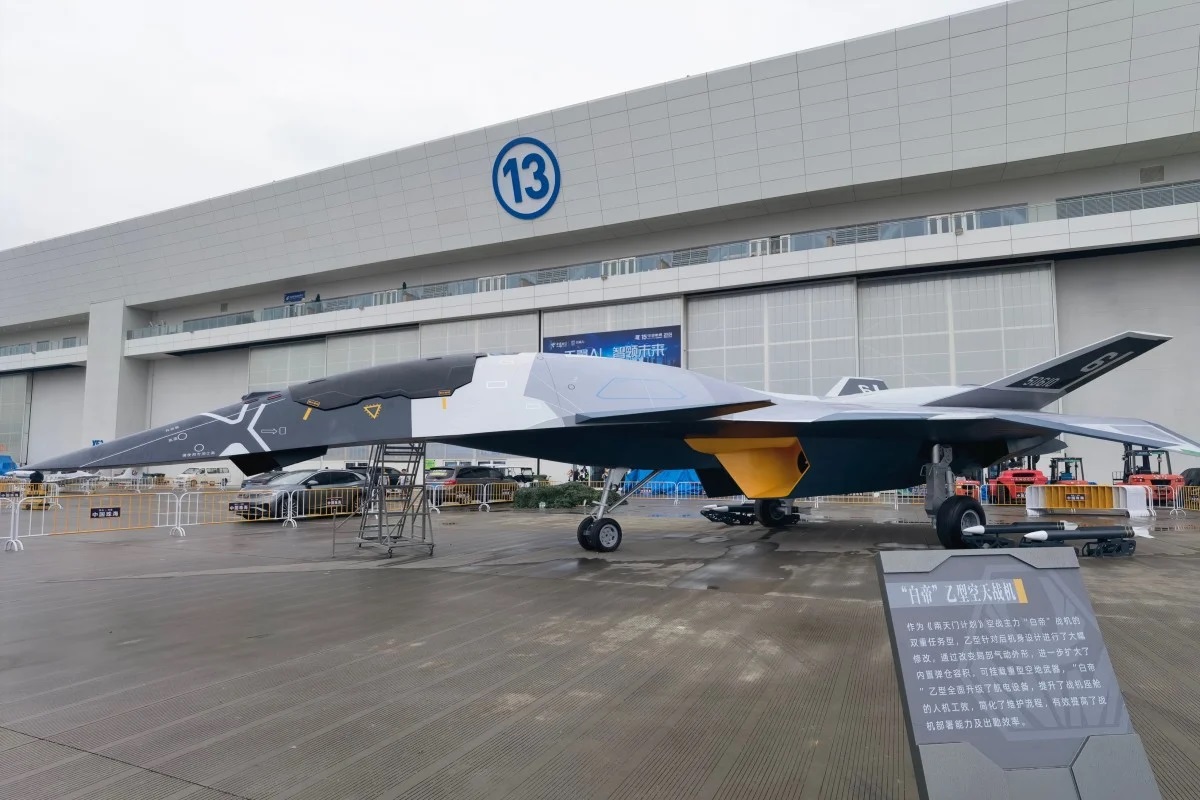 China Unveils the 6th-Generation “Baidi B-Type” Aerospace Fighter Concept
China Unveils the 6th-Generation “Baidi B-Type” Aerospace Fighter Concept
-
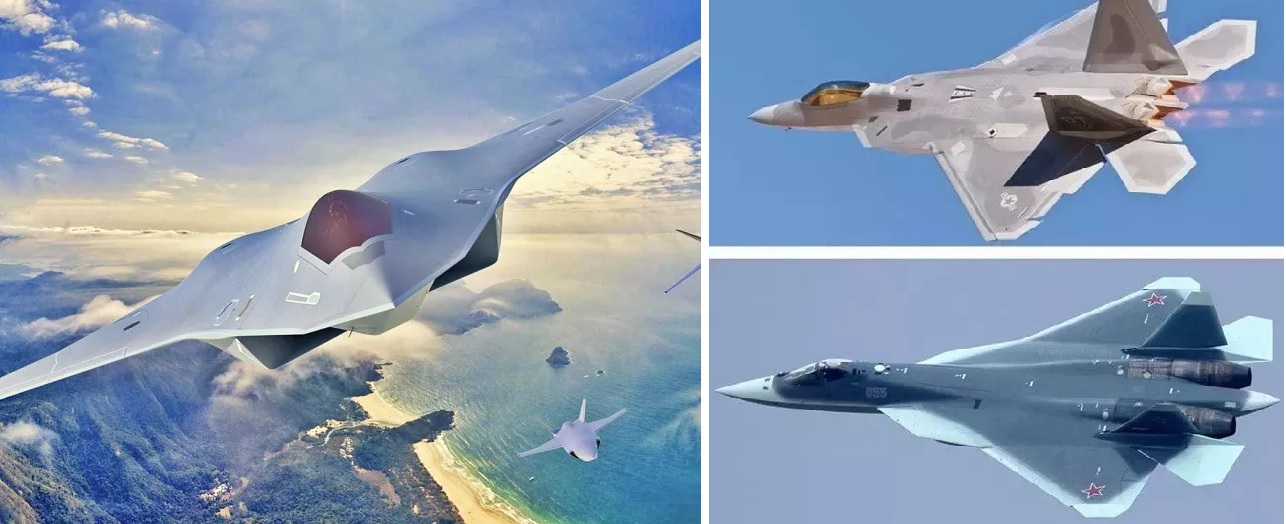 Key Differences Between 5th vs. 6th Generation Fighter Jets
Key Differences Between 5th vs. 6th Generation Fighter Jets
-
 China's Latest DF-31AG ICBM Test: A Strategic Leap in Global Missile Capabilities
China's Latest DF-31AG ICBM Test: A Strategic Leap in Global Missile Capabilities
-
 What Would Happen if the USA Left NATO? A Comprehensive Analysis
What Would Happen if the USA Left NATO? A Comprehensive Analysis
-
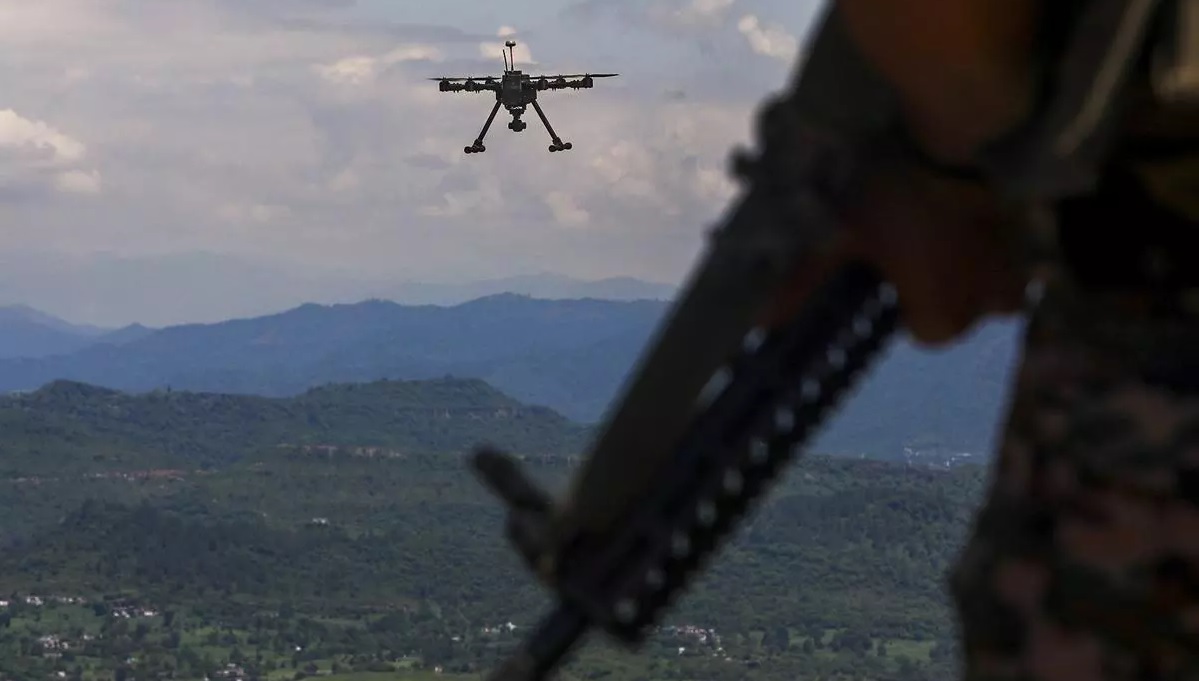 India's Defence Ministry Warns Against Chinese Parts in Military Drones Amid Security Concerns
India's Defence Ministry Warns Against Chinese Parts in Military Drones Amid Security Concerns
Top Trending in 4 Days
-
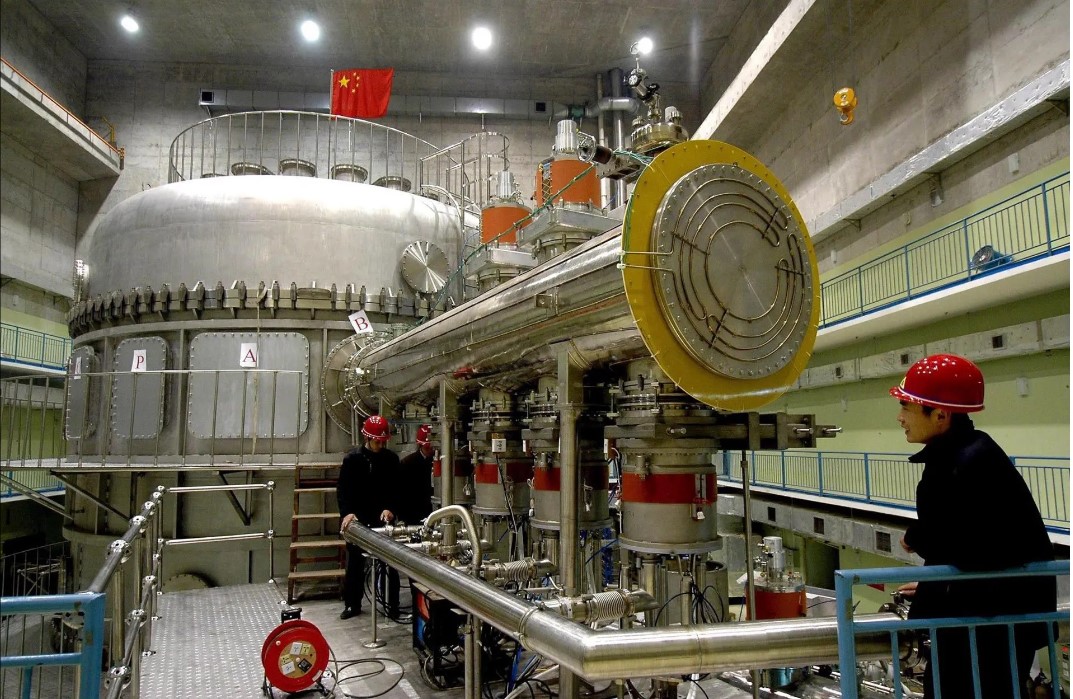 China’s Xinghuo: The World’s First Fusion-Fission Power Plant Set to Revolutionize Energy by 2030
China’s Xinghuo: The World’s First Fusion-Fission Power Plant Set to Revolutionize Energy by 2030
-
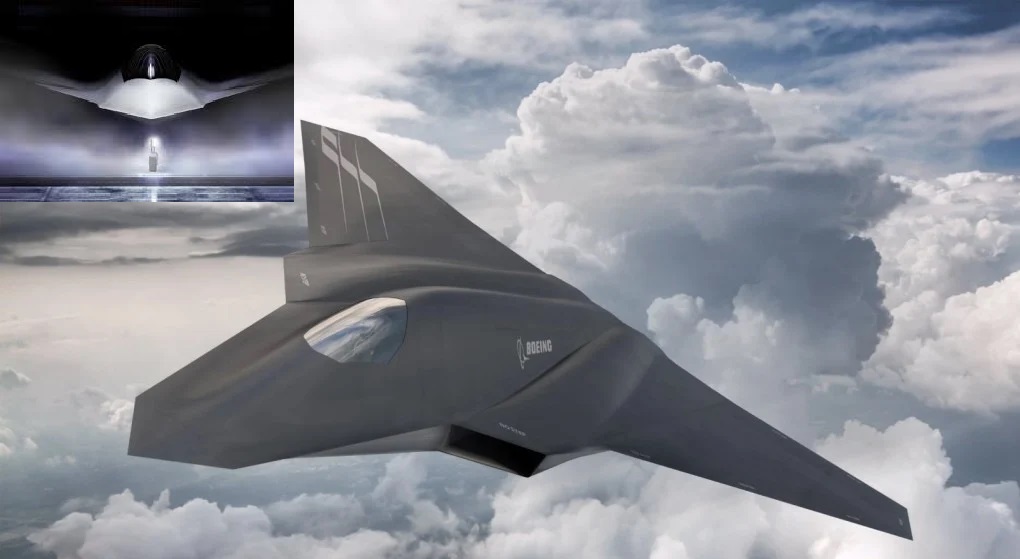 Boeing’s F-47 Canard Controversy: A Glimpse into USAF’s 6th-Gen Fighter Strategy
Boeing’s F-47 Canard Controversy: A Glimpse into USAF’s 6th-Gen Fighter Strategy
-
 U.S. Navy Nears Decision on Next-Generation F/A-XX Stealth Fighter Contractor
U.S. Navy Nears Decision on Next-Generation F/A-XX Stealth Fighter Contractor
-
 China’s 2027 Taiwan Deadline: How Beijing Could Conquer Without Firing a Shot
China’s 2027 Taiwan Deadline: How Beijing Could Conquer Without Firing a Shot
-
 Sixth-Generation Fighter Showdown: F-47, GCAP, FCAS, and J-36 (Baidi) – The Future of Air Dominance
Sixth-Generation Fighter Showdown: F-47, GCAP, FCAS, and J-36 (Baidi) – The Future of Air Dominance
-
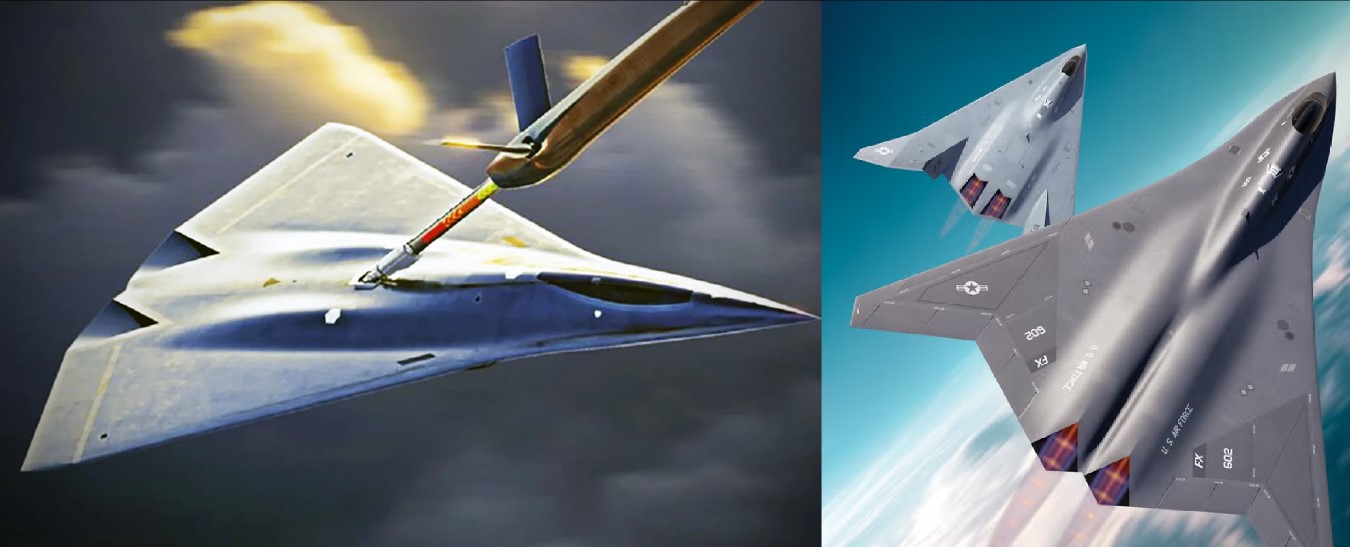 Lockheed Martin Looks Beyond NGAD Loss, Eyes Future Air Superiority Programs
Lockheed Martin Looks Beyond NGAD Loss, Eyes Future Air Superiority Programs
-
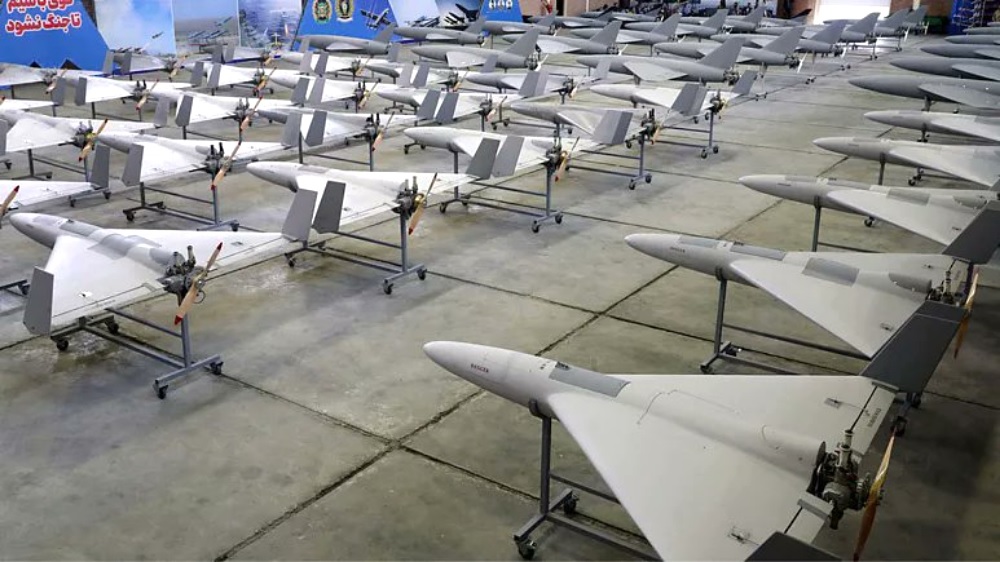 India's $500 Kamikaze Drones: The Strategic Equalizer Against $10 Million War Machines
India's $500 Kamikaze Drones: The Strategic Equalizer Against $10 Million War Machines
-
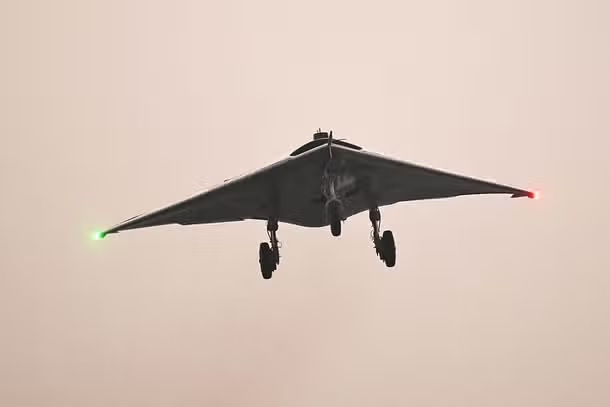 India Advances Ghatak Stealth Drone with Full-Scale Prototype, But Funding Holds the Key
India Advances Ghatak Stealth Drone with Full-Scale Prototype, But Funding Holds the Key



